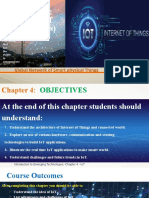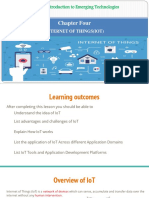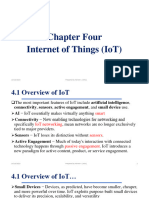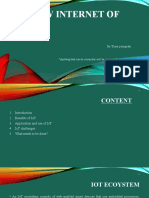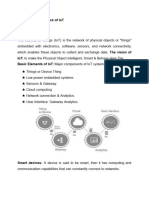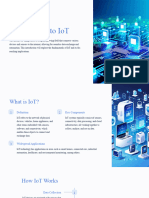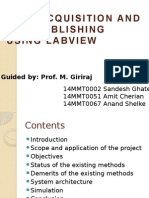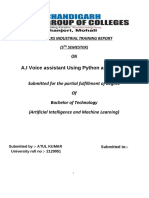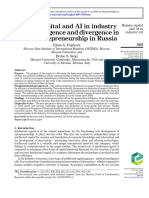0% found this document useful (0 votes)
19 views64 pagesBasics of IoT
The document provides an overview of the Internet of Things (IoT), covering its fundamentals, evolution, architecture, and key components such as sensors and actuators. It discusses the advantages and disadvantages of IoT, including security risks and privacy concerns, as well as the challenges faced in its implementation. Additionally, it highlights current and future trends in IoT, emphasizing advancements like 5G, AI integration, and the importance of sustainability.
Uploaded by
goyalanurag678Copyright
© © All Rights Reserved
We take content rights seriously. If you suspect this is your content, claim it here.
Available Formats
Download as PDF, TXT or read online on Scribd
0% found this document useful (0 votes)
19 views64 pagesBasics of IoT
The document provides an overview of the Internet of Things (IoT), covering its fundamentals, evolution, architecture, and key components such as sensors and actuators. It discusses the advantages and disadvantages of IoT, including security risks and privacy concerns, as well as the challenges faced in its implementation. Additionally, it highlights current and future trends in IoT, emphasizing advancements like 5G, AI integration, and the importance of sustainability.
Uploaded by
goyalanurag678Copyright
© © All Rights Reserved
We take content rights seriously. If you suspect this is your content, claim it here.
Available Formats
Download as PDF, TXT or read online on Scribd
/ 64


